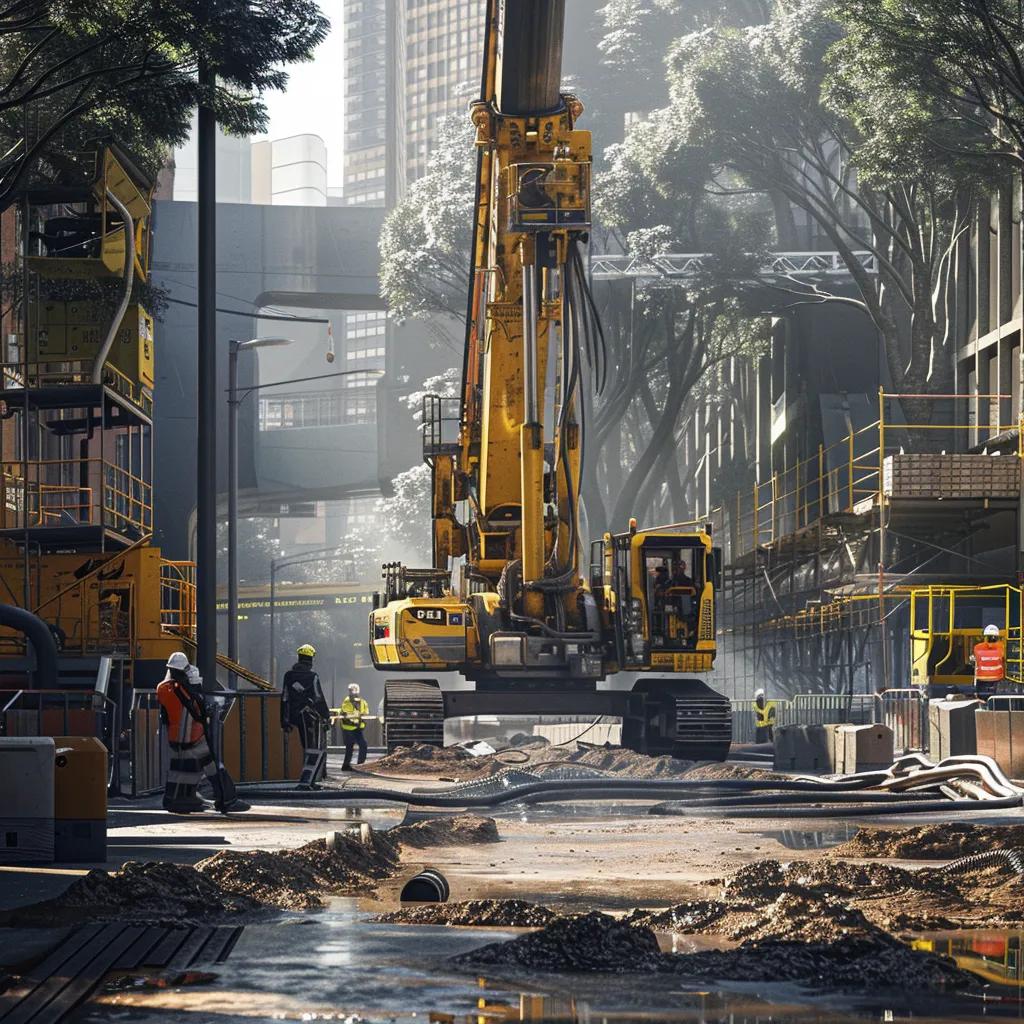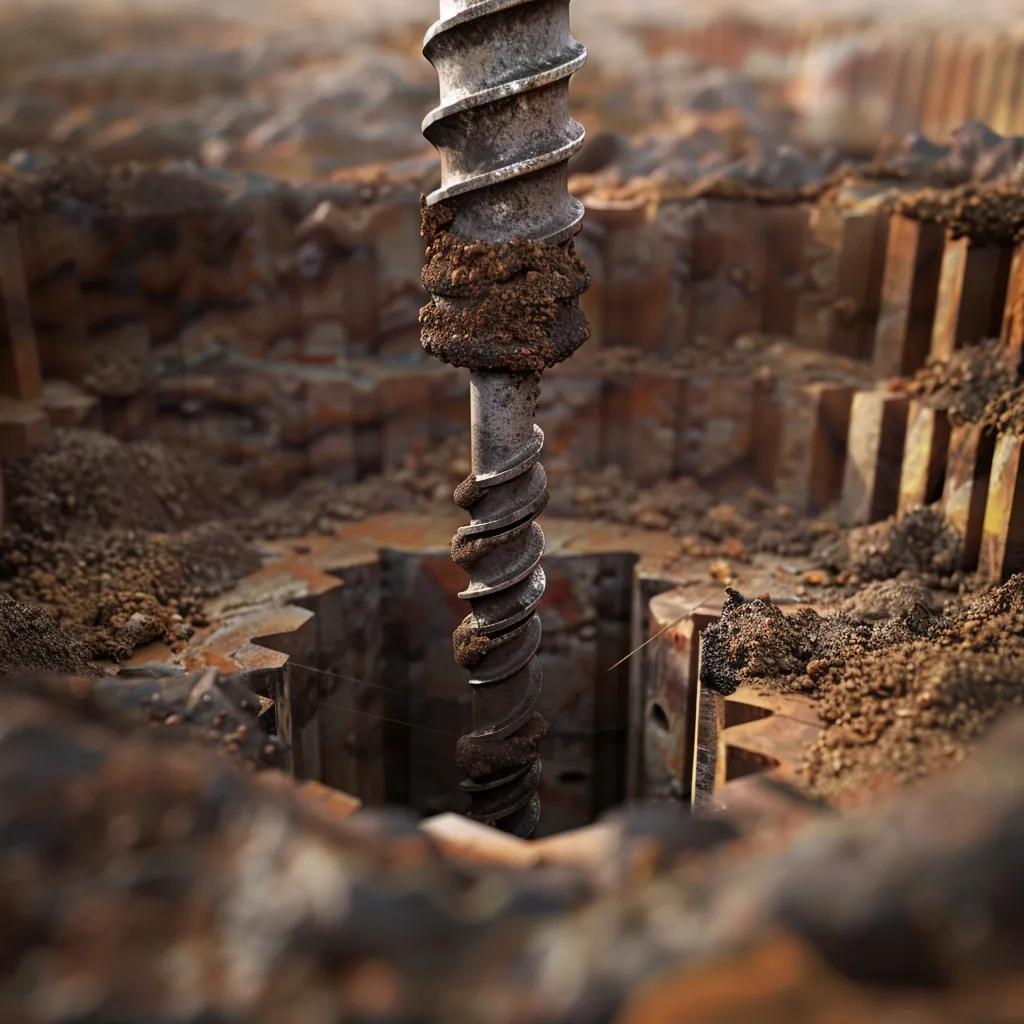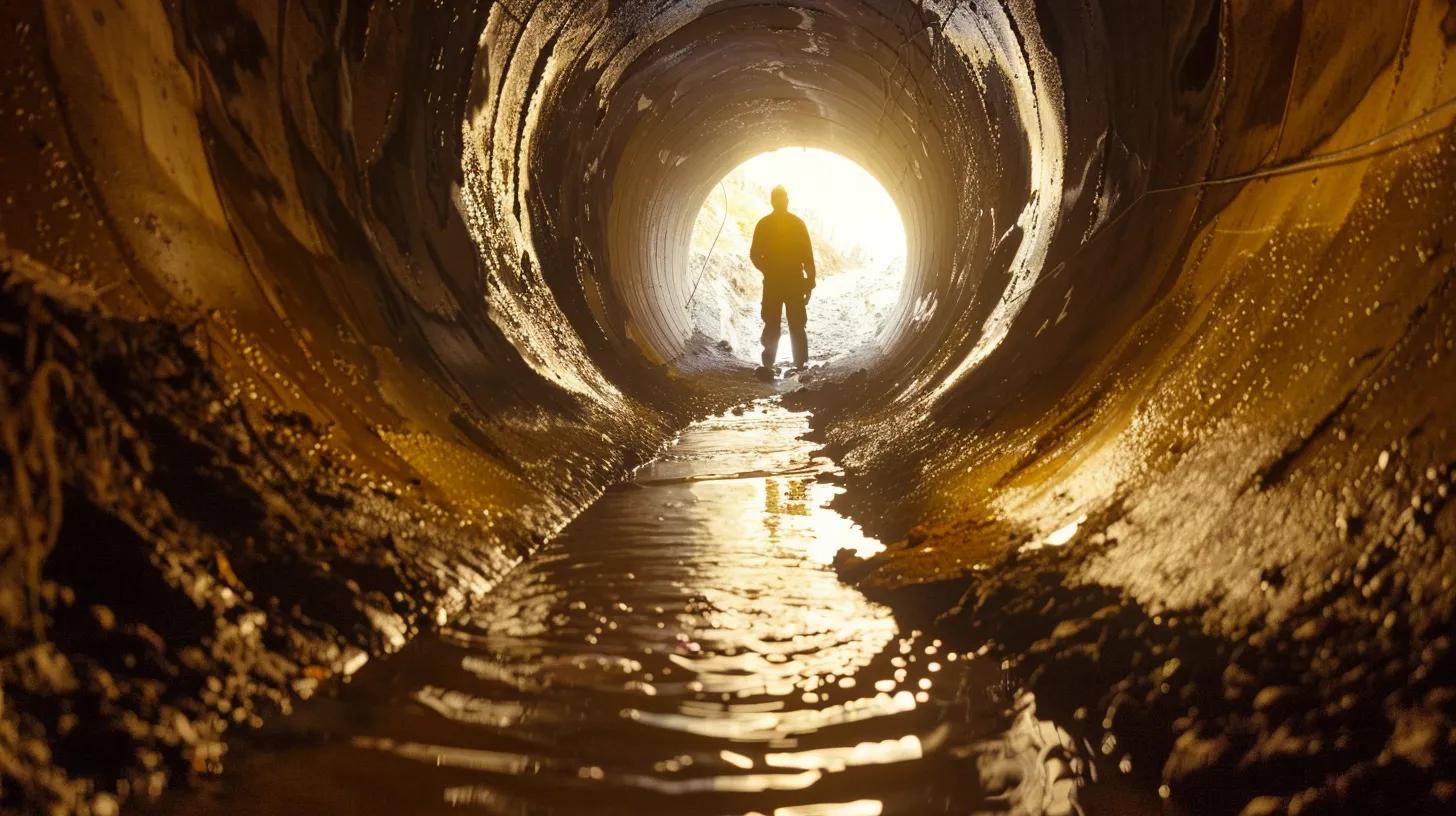
Efficient Trenchless Pipe and Cable Installs in Sydney
Under road boring in Sydney transforms pipe and cable installation by utilising trenchless directional drilling to avoid disruptive excavation and reduce project timelines. As a leading specialising in plumbing and civil infrastructure, Clearwater Plumbing & Civil applies state-of-the-art trenchless methods to deliver reliable installations with minimal surface impact.
In this article, you will discover how under road boring works in Sydney; key benefits of trenchless technology; common applications in water, gas, electrical and telecom conduit installations; why Clearwater Plumbing & Civil leads with advanced equipment, and how local infrastructure standards shape sustainable outcomes.
What is Under Road Boring and How Does It Work in Sydney?
Under Road Boring is a trenchless installation method that uses directional drilling to create a subsurface pathway for new pipes and cables beneath roads, driveways and rail corridors. This approach relies on precise bore-planning and guidance systems to maintain alignment and achieve efficient installations without open trenches. Understanding trenchless technology sets the stage for exploring directional drilling mechanics that power under road boring projects.
What Is Trenchless Technology and Why Is it Important?
Trenchless technology refers to construction techniques that install or repair underground utilities with minimal surface disruption, preserving roads, landscaping and traffic flow.
By eliminating large excavations, trenchless methods improve environmental outcomes—such as reduced soil displacement and lower carbon emissions—and accelerate project timelines compared to open-cut excavation. For example, using pipe-bursting under a busy arterial road in Sydney saved weeks of traffic management and restoration work.
Mastering trenchless methods leads directly into understanding directional drilling mechanics.
How Does Directional Drilling Enable Under Road Boring?

Directional drilling enables under road boring by steering a drill head along a pre-planned subsurface path. First, a pilot hole is drilled using a steerable bit guided by real-time locating equipment. Next, the pilot bore is enlarged (reamed) to match the diameter of the new pipe or conduit. Finally, the casing or pipe is pulled back through the reamed hole. Each phase relies on geospatial data and down-hole sensors to maintain accuracy and minimise ground disturbance.
This process overview naturally progresses into the specific steps involved in under road boring projects..
What Are the Key Steps in the Under Road Boring Process?
Before outlining equipment, it helps to break the process into three essential phases:
- Pilot Hole Drilling – A small-diameter bore navigates the designed alignment.
- Reaming – Progressive cutters enlarge the pilot hole to accommodate the new conduit.
- Pipe Pullback – The pipe or cable is attached to the reamer assembly and pulled through the bore.
These steps ensure a seamless transition from initial drilling to final installation and set the foundation for selecting appropriate drilling rigs and locating systems.
Which Equipment Is Used for Directional Drilling in Sydney?
Below is a breakdown of the core equipment that enables precision installations:
| Entity | Attribute | Value |
|---|---|---|
| Drilling Rig | Power Source | Diesel-hydraulic with adjustable torque and thrust |
| Steering Tool | Guidance System | Down-hole gyro or walk-over locator |
| Reamer Assemblies | Cutting Mechanism | Multi-stage cutters for incremental bore enlargement |
| Steel Casing or HDPE Pipe | Conduit Material | High-density polyethylene or steel with corrosion-resistant coating |
| Mud Mixing System | Lubrication & Cooling | Bentonite slurry for bore stability and cuttings removal |
Each piece of machinery works in concert to ensure under road boring meets project specifications and site conditions, leading into a discussion of its key benefits.

What Are the Key Benefits of Trenchless Technology for Sydney Projects?
Trenchless technology offers significant advantages in urban and suburban settings, improving efficiency, cost-effectiveness, and environmental performance. These methods minimize surface disruption, reduce project timelines, and lower overall project costs compared to traditional open-cut excavation.
How Does Trenchless Technology Minimise Surface Disruption?
Trenchless installations reduce the need for open trenches, preserving roads, gardens and footpaths. This minimal disturbance approach limits dust, noise and reinstatement works in high-traffic areas such as Sydney’s CBD and inner suburbs. By maintaining surface integrity, trenchless methods support uninterrupted access for local businesses and residents.
What Cost Savings Can Clients Expect Compared to Open-Cut Excavation?
Clients typically see direct savings in labour, traffic control, and surface restoration. Indirect savings arise from reduced business downtime, lower council charges and fewer utility relocations. Overall, trenchless methods can lower total project costs by up to 30% when factoring in indirect expenses.
How Does Under Road Boring Speed up Project Completion?
By eliminating extensive excavation and reinstatement phases, under road boring shortens project schedules. Pilot drilling, reaming and pullback can often be completed within days rather than weeks. Accelerated timelines reduce on-site risks, expedite commissioning and improve return-on-investment for infrastructure owners.
What Environmental Advantages Does Trenchless Technology Offer?
Trenchless methods preserve existing vegetation, limit spoil generation and reduce greenhouse gas emissions associated with heavy excavation. Lower disturbance to soil structure protects groundwater integrity and habitat corridors. This sustainable profile aligns with Sydney Water’s objectives for responsible network upgrades.
How Does Trenchless Technology Improve Safety for Workers and the Public?
With no open trenches or exposed excavations, trenchless installations reduce fall hazards and vehicle-excavator interactions. Remote monitoring of drill head parameters and ground movement sensors further mitigate subsidence risks. Enhanced safety protocols protect crews and the community throughout the drilling cycle.
What Are the Common Applications of Under Road Boring in Sydney?
- Water Pipe Installation: Under road boring is commonly used to install potable water mains and service lines under paved surfaces without disrupting water supply. By incorporating slip-lining techniques, aging cast-iron pipes can be rehabilitated in place, reducing downtime for both residential and municipal networks.
- Electrical Cables and Telecommunications Lines: Yes, under road boring is frequently used for installing high-tensile conduits for power cables and fibre optic ducts for NBN infrastructure. This method ensures continuous bore quality, which helps maintain cable integrity and mitigates signal interference.
- Gas Line Installation: Under road boring allows the safe placement of high-pressure gas mains beneath roads and rail corridors. The use of remote-steering drill heads and real-time monitoring helps protect against ground anomalies, ensuring compliance with safety regulations for industrial and commercial gas connections.
- Sewer and Stormwater Drainage Systems: For stormwater easements and sewer upgrades, trenchless techniques like casing-in-casing methods allow for new pipelines to be installed without excavation. This approach reduces the risk of surface collapse and minimizes liquefaction risks, especially in Sydney’s diverse soil conditions.
- Typical Locations for Under Road Boring in Sydney:
Common locations include:
- Arterial roads
- Residential driveways
- Railway crossings
- Densely built commercial precincts These areas benefit from minimal disruption and rapid reinstatement, making under road boring the preferred method for challenging sites.
- Arterial roads
- Residential driveways
- Railway crossings
- Densely built commercial precincts These areas benefit from minimal disruption and rapid reinstatement, making under road boring the preferred method for challenging sites.
Why Choose Clearwater Plumbing & Civil for Under Road Boring in Sydney?
With over 15 years serving Sydney and Port Macquarie, Clearwater’s team holds certifications in Sydney Water approved methods, Master Plumbers Association accreditation and Civil Contractors Federation membership. Our personnel undergo continuous training in the latest directional drilling techniques.
Which Advanced Equipment and Techniques Does Clearwater Use?
Clearwater deploys high-torque diesel-hydraulic rigs, gyro-steering downhole tools and automated mud mixing systems. Proprietary bore-design software and real-time telemetry enable precise alignment even in congested utility corridors.
How Does Clearwater Ensure Safety and Regulatory Compliance?
We implement risk assessments, third-party utility locates and ground movement monitoring on every site. Compliance with RMS and local council permits is managed through our dedicated approvals team, ensuring zero delays due to inspections or breaches.
How Does Under Road Boring Cost in Sydney and What Factors Affect Pricing?
Here are the main cost components of under road boring projects:
| Entity | Attribute | Value |
|---|---|---|
| Labour | Crew Size | 3–5 certified operators and technicians |
| Equipment | Mobilisation | Rig transport, set-up and calibration |
| Consumables | Drill Fluids | Bentonite or polymer blend for bore conditioning |
| Site Restoration | Reinstatement | Asphalt, concrete or landscaping repair |
| Permits & Inspections | Regulatory Fees | Council and utility authority approvals |
Labour and machinery sit at the core of pricing, with restoration and approvals shaping the final quote.
How Do Project Size and Complexity Influence Pricing?
Larger bores or those requiring directional changes add reaming stages and extended drill times, increasing rig hours and crew costs. Rocky or high-water-table ground conditions may require specialised fluid systems and downhole tools, affecting consumable and equipment rental fees.
How Does Trenchless Technology Reduce Indirect Costs Like Traffic Management?
By avoiding lengthy open-cut zones, trenchless projects eliminate prolonged lane closures, traffic control barriers and business interruption charges. Shorter on-site durations translate into fewer temporary signage, flagging and lighting requirements.
How Can Clients Request a Quote or Consultation From Clearwater?
Clients can visit our contact page or contact our office at 0410 997 080. A site inspection and preliminary bore design are included in our free consultation to develop a tailored proposal. Cost transparency prepares us for the most common client inquiries around under road boring.
What Are the Frequently Asked Questions About Under Road Boring in Sydney?
Below are concise answers to common queries that guide decision-making and snippet-ready responses.
What Is the Difference Between Under Road Boring and Traditional Trenching?
Under road boring uses directional drilling to install utilities beneath surfaces without excavation, while traditional trenching cuts open trenches, causing greater surface disruption, longer restoration and higher traffic management costs. This trenchless approach preserves site integrity and expedites completion.
Is Under Road Boring Suitable for All Types of Underground Utilities?
Under road boring supports water, sewer, gas, electrical and telecommunications installations. However, extremely large-diameter sewers or very shallow services may require alternative trenchless methods such as microtunnelling or open-cut.
How Long Does an Under Road Boring Project Typically Take?
A standard 50 m under road bore can be completed in one to two days, including mobilisation and site reinstatement. Complex alignments or multiple reaming passes may extend project durations accordingly.
What Safety Measures Are in Place During Under Road Boring?
Safety protocols include pre-bore utility scanning, risk assessments, ground movement monitoring, protective fencing and real-time drill-head telemetry. These measures protect workers, motorists and adjoining properties.
How Does Under Road Boring Impact Local Traffic and Businesses?
Because bores occur underground, surface lanes remain open or require minimal lane shifts. This ensures uninterrupted access for vehicles and pedestrians and reduces noise and dust compared to open trenches. These foundational answers lead into the technical underpinnings of directional drilling that powers trenchless installations.
How Does Directional Drilling Technology Support Efficient Under Road Boring?
What Is Horizontal Directional Drilling (HDD) and How Is It Used?
Horizontal Directional Drilling (HDD) is a steerable trenchless method that guides a drill head along a predetermined horizontal path. In under road boring, HDD creates a controlled subsurface conduit that aligns with utility corridors and avoids existing underground assets.
How Are Pilot Holes Drilled and Guided Underground?
Pilot holes are drilled using a steerable head equipped with bend-sub assemblies. Locating sensors (gyro or walk-over systems) track the bit’s position and inclination, enabling operators to make minute adjustments and maintain the design profile.
What Is the Reaming and Pipe Pullback Process?
After the pilot hole, increasingly larger reamers pass through the bore to achieve the final diameter. The pipe or casing is then attached to the reamer and pulled back through the enlarged hole, completing the installation in a single pullback operation.
What Equipment and Technology Ensure Accuracy and Safety?
Precision down-hole sensors, surface-mounted tracking antennas and real-time telemetry software synchronise subsurface data with surface controls. Auto-steering features and torque monitoring prevent deviation and overcut, ensuring a safe, accurate bore. These technical capabilities integrate seamlessly with Sydney’s regulatory framework for sustainable under road boring projects.
How Does Under Road Boring Align with Sydney’s Infrastructure and Environmental Standards?
What Sydney-Specific Regulations Govern Under Road Boring Projects?
Projects require council permits, RMS approvals for road crossings and compliance with Sydney Water’s Trenchless Installation Code. Soil management plans and traffic control documentation must be lodged before works commence.
How Does Trenchless Technology Support Sydney Water and Municipal Infrastructure Needs?
Trenchless methods align with network renewal programs by enabling pipe relining and main upgrades without service disruptions. Reduced excavation lowers the risk of accidental damage to existing water and sewer mains.
What Environmental Protections Are Integrated Into Under Road Boring Projects?
Soil containment systems, silt fences and hydrocarbon traps safeguard sensitive habitats and watercourses. Recycled drill-fluid recirculation minimises waste disposal and aligns with New South Wales environmental standards.
How Does Under Road Boring Extend the Lifespan of Underground Infrastructure?
By installing high-performance HDPE or steel-lined pipes in a controlled bore, trenchless installations reduce corrosion, joint failure and ground movement impacts. This renewal approach can extend asset life by up to 70 years, supporting sustainable infrastructure outcomes.
The Takeaway
Clearwater Plumbing & Civil’s expertise in regulatory compliance and environmental stewardship ensures every project meets Sydney’s rigorous standards. For reliable, low-impact under road boring solutions in Sydney, contact Clearwater Plumbing & Civil at clearwaterpc.com.au or call 0410 997 080 to discuss your next trenchless technology project.

